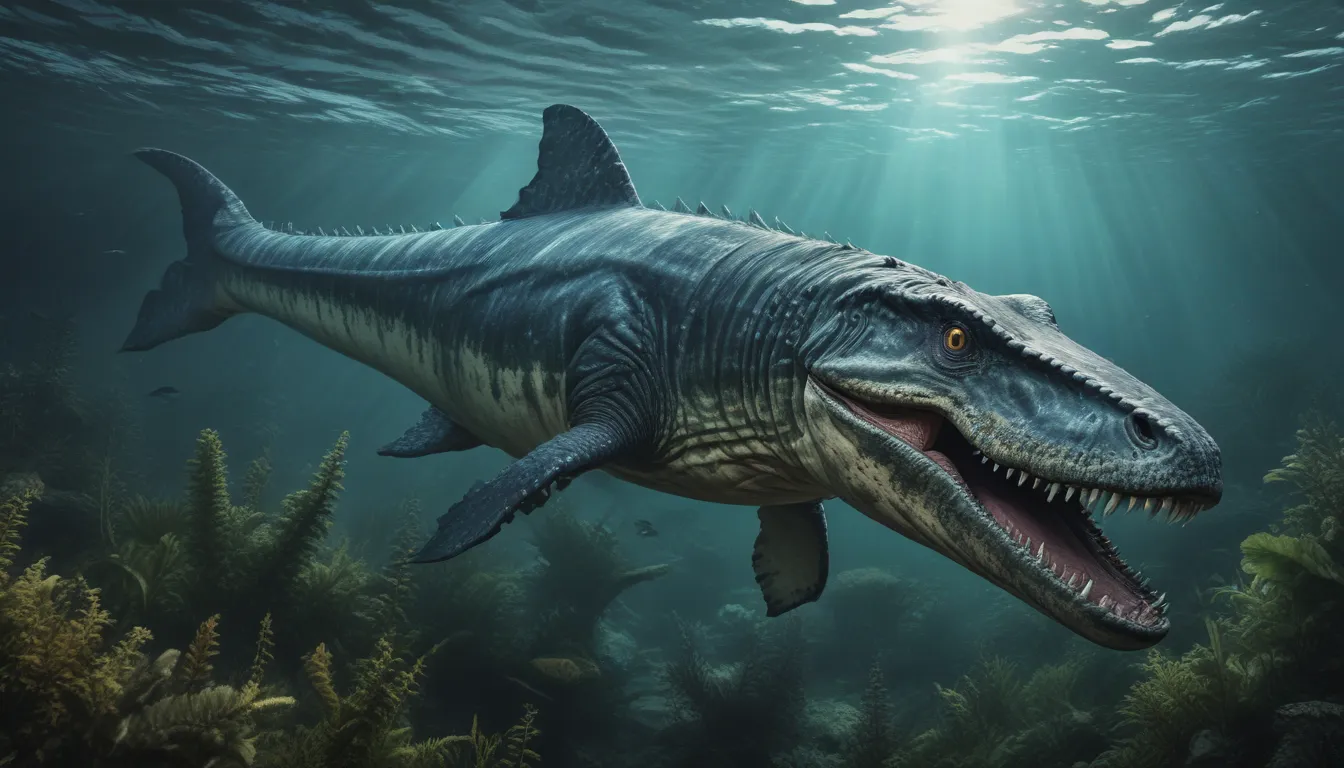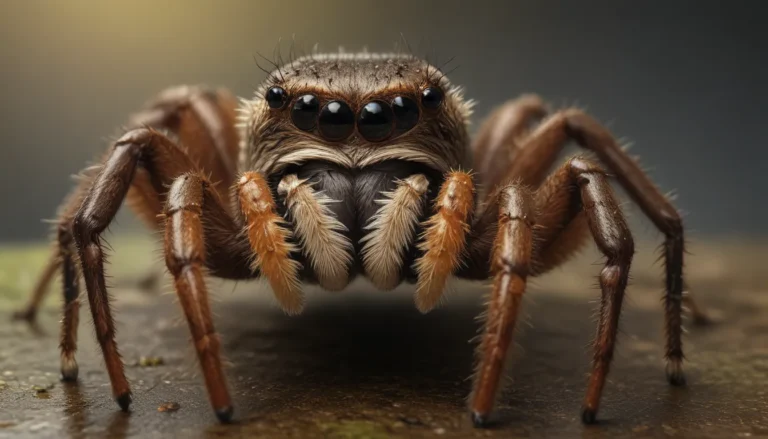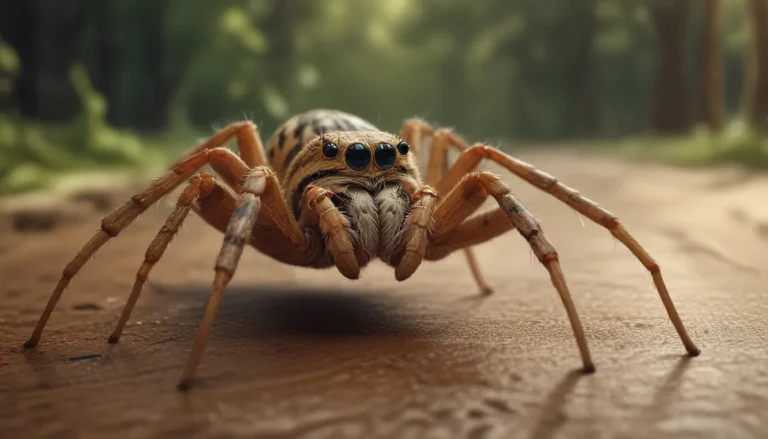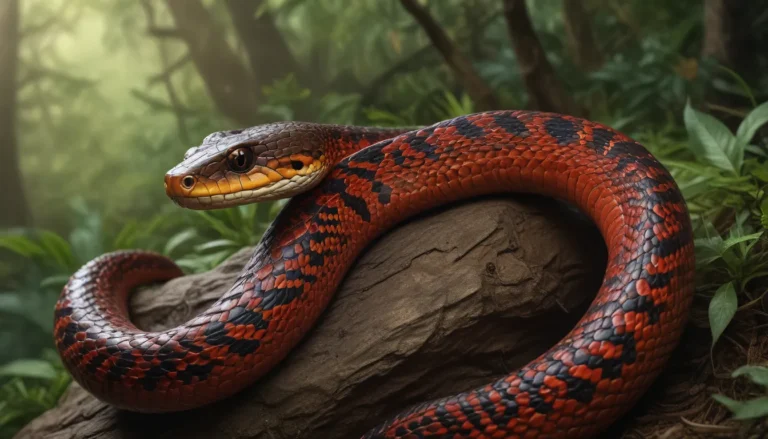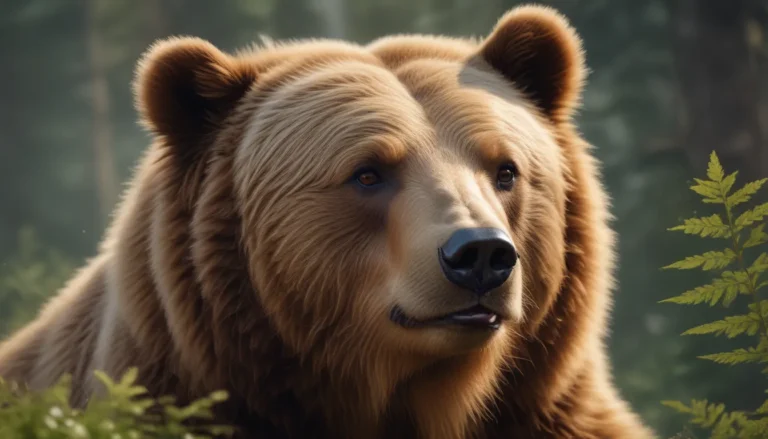The pictures we use in our articles might not show exactly what the words say. We choose these pictures to make you interested in reading more. The pictures work together with the words but don’t take their place. The words still tell you the important facts.
Are your children intrigued by the wonders of prehistoric creatures? If so, they are sure to be captivated by the awe-inspiring Mosasaurus! This marine reptile thrived during the Late Cretaceous period, showcasing its colossal size and formidable prowess as one of the most intriguing sea dwellers of its time.
Join us on an enthralling journey into the realm of Mosasaurus as we unveil 19 astonishing facts that will both amaze and educate your little ones. From its immense jaw and powerful bite to its sleek body and ability to swiftly navigate the ocean depths, the Mosasaurus was indeed an extraordinary predator in the ancient seas.
So, prepare for an expedition back in time as we delve into the remarkable world of Mosasaurus and unearth some mind-boggling facts that will surely spark excitement in your children!
Discovering the Marvels of Mosasaurus:
- The Mosasaurus, an extinct marine reptile, thrived during the Late Cretaceous period around 70-66 million years ago, resembling a colossal aquatic lizard.
- It stood as one of the largest marine reptiles ever known, stretching up to 50 feet in length and weighing several tons – longer than a mighty school bus!
Unveiling the Aquatic Predator:
- Mosasaurus reigned as an apex predator of the seas, equipped with a lengthy, streamlined body and robust jaws filled with sharp teeth, predominantly preying on fish, squid, and other sea creatures.
Exploring Unique Adaptations:
- With a form finely tuned for aquatic life, Mosasaurus sported powerful flippers for propulsion, a muscular tail for agile swimming, and nostrils positioned on its head for efficient breathing while submerged.
Journey through Fossils:
- Discoveries of Mosasaurus fossils across North America, Europe, and Africa have bestowed valuable insights into the anatomy and behaviors of these ancient reptiles, offering a glimpse into their majestic past.
Delving into Dental Wonders:
- The intercrossed teeth of Mosasaurus, akin to shark teeth, allowed for a firm grip on prey, facilitating efficient swallowing.
Experiencing Speed and Precision:
- Mosasaurus exhibited remarkable agility as swift swimmers, courtesy of their streamlined bodies and robust tails, enabling them to swiftly capture prey with remarkable ease.
Adapting to Varied Diets:
- Their versatile diet extended to include turtles, smaller mosasaurs, and even seabirds hovering too closely above the water, showcasing their adaptability as hunters.
Appreciating Sharp Vision:
- Equipped with large eyes situated on their heads' sides, Mosasaurus possessed excellent vision for navigating ocean depths in pursuit of food.
Embracing Their Air-Breathing Nature:
- Contrary to modern-day fish, Mosasaurus were air-breathing reptiles, surfacing periodically to breathe, akin to whales or dolphins.
Reflecting on Extinction:
- Sadly, like many other prehistoric creatures, Mosasaurus met its demise around 66 million years ago, coinciding with the dinosaurs' extinction, shrouding its exact extinction cause in scientific debate.
Unveiling Paleontological Significance:
- Mosasaurus fossils played a pivotal role in unraveling prehistoric marine life mysteries and ancient ocean ecological dynamics, enriching our scientific understanding.
Diving into Social Behavior:
- Recent studies hint at Mosasaurus's possible social tendencies, potentially traveling in groups for feeding, mating, or other communal activities.
Debunking Dinosaur Myths:
- Despite coexisting with dinosaurs, Mosasaurus belonged to the Mosasauridae group of reptiles, distinct from dinosaurs.
Reflecting on Aquatic Evolution:
- Over time, Mosasaurus underwent evolutionary adaptations for full aquatic life, including paddle-like limbs and a tail fluke for optimal swimming.
Witnessing Living Legacies:
- Present-day monitor lizards, like the Komodo dragon, stand as living relatives of Mosasaurus, showcasing shared features and behaviors from the ancient reptilian era.
As we skim through these captivating Mosasaurus facts, we merely scratch the surface of the enthralling world of prehistoric marine reptiles. Encourage your child's curiosity by delving into books, documentaries, and museum exhibits to unearth more about these majestic creatures that once roamed our ancient oceans.
Embracing the Legacy of Mosasaurus:
In summary, the intriguing realm of Mosasaurus offers an educational and thrilling journey for children. These ancient marine predators ruled the Late Cretaceous seas, leaving behind a trove of remarkable legacies. From their colossal size to their unique adaptations, Mosasaurus boasts a myriad of enchanting attributes that fuel curiosity and imagination.
Through this exploration, we've unraveled 19 captivating Mosasaurus facts, ranging from their physical prowess to dietary habits and habitats. Delving into these details can foster a deep-seated appreciation for the animal kingdom's wonders and the diverse life forms that once thrived millions of years ago.
As children venture into the world of Mosasaurus, they can expand their knowledge of paleontology, evolution, and environmental preservation's significance. Nurturing curiosity and exploration in young minds lays the foundation for fostering a lifelong passion for science and the natural world.
Embark on this prehistoric adventure with Mosasaurus, and watch imagination soar to new heights!
Frequently Asked Questions:
- Q: How big was Mosasaurus?
-
A: Mosasaurus could grow up to 50 feet in length, ranking among the largest marine reptiles of its era.
-
Q: What did Mosasaurus eat?
-
A: These carnivorous predators primarily fed on fish, squid, and various marine creatures.
-
Q: Where did Mosasaurus live?
-
A: Mosasaurus thrived in oceans worldwide during the Late Cretaceous period, approximately 70-65 million years ago.
-
Q: Were Mosasaurus dinosaurs?
-
A: Mosasaurus were marine reptiles, distinct from dinosaurs, and belonged to the mosasaur group.
-
Q: How did Mosasaurus breathe?
-
A: Mosasaurus were air-breathing reptiles, equipped with lungs akin to whales or dolphins, surfacing periodically to breathe air.
-
Q: What caused the extinction of Mosasaurus?
-
A: The mass extinction event approximately 65 million years ago, which wiped out dinosaurs, likely led to the demise of Mosasaurus and other marine reptiles.
-
Q: Are there any living relatives of Mosasaurus?
- A: Mosasaurus and other mosasaurs are extinct, with no living relatives existing today.
Our unwavering dedication to delivering authentic and engaging content drives us to ensure each fact shared on our platform is validated and enriching. Every contribution from users like you adds diverse insights, fostering a rich tapestry of knowledge. Trust in our commitment to quality as you traverse the marvels of learning and exploration with us.
Fascinated by the realm of prehistoric wonders? Explore more captivating facts with our curated content and embrace the joys of discovery!
